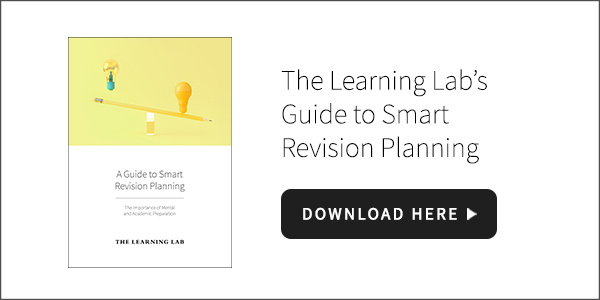
Contributed by Mrs Therese Cheng, Academic Director of TLL Marine Parade Central.
Therese taught the general paper in a local junior college before joining TLL. With almost 10 years of experience in teaching English and developing the English curriculum at TLL, she has a wealth of experience in helping students excel in class and exams.
She is also a loving mother of two primary school children. In this article, she shares 5 valuable tips on what your child should do before key examinations like the SA1s and SA2s.
***
It is a full moon. A man is changing. Against the full moon, the hairs on his back stand on end and he howls into the night.
It is October in Singapore — competitiveness, anxiety and insecurity have reared their ugly heads. A woman is changing. The hairs on her back stand on end. In a voice now two octaves higher, she howls, not into the night, but at her offspring, whose bloodshot eyes would put a red-eyed tree frog to shame.
That’s me, at the height of the exam fever. And I sense that I am not alone in this.
So when I was given the opportunity to share about what children should do before their exam, I was delighted. It gives me a chance to reconcile my anxieties as a parent with my views as an educator of students from junior college to primary school for the past 15 years.
After much reflection and contemplation, I have come up with a list of 5 important things we and our children should do to better prepare for any examinations. Hopefully, these strategies will help us to manage our children’s stress levels and preserve our own sanity.
3 To 4 Weeks To The Exams

1. Plan A Timetable For Revision
My daughter, who is in Primary 2, recently asked me to buy her a planner so that she could outline her weekly schedule.
Hilarious as that sounds — that an 8-year-old needs a planner to organise her life — this is also a sobering reflection of the life that our children now lead.
With school, CCAs, TLL classes, music classes, dance classes and taekwondo sparring sessions vying for their time, special care should be taken to ensure that our children do not burn out during the examination period.
Apart from having a revision schedule to keep to, planning a timetable helps in two other ways:
a. It allows your child to prioritise his or her revision topics
Which topics am I weaker in?
Which components or sections do I tend to lose the most marks in?
Which paper is the earliest?
These are questions your child (or parents of younger children) may ask before planning a timetable
A timetable can then help your child to allot his revision time accordingly to his needs.
Perhaps, he or she may allocate one and a half days to revising Synthesis and Transformation and half a day to cloze passage because he or she is weaker in Synthesis and Transformation.
He or she may also prioritise revision of the subjects that are tested earlier.
Finally, for older children, having some control over the revision schedule can give him or her a sense of ownership and motivation to stick to the plan.
To help enhance your child's revision for the exams, we have put together a short guide where we share some strategies to engage in smart revision planning and tips on building mental strength and resilience.
b. It allows your child to set realistic targets
Just spent an afternoon at Popular Bookstore buying up the entire shelf of assessment books for your child?
When the exams are looming, parents (myself guilty as charged) may find reassurance in procuring massive quantities of assessment and past year papers.
For many, preparedness seems to be measured by the number of exercises or past papers completed.
However, frequently, such plans may not come to fruition because the child simply cannot find the time (or energy) to finish everything. A timetable is a visual representation of one’s routine and daily life.
Drawing up a timetable allows both you and your child to see how much time, on top of the usual routines of school and extra classes, can be devoted to revision every day.
This can help parents and our children to set realistic targets on how much to do — and then head for the book store.
2. Identify And Study In Preferred Learning Style

Your son is supposed to be studying and yet you hear the pounding of the basketball coming from his room. You storm to his room and are greeted by your son dribbling a basketball in front of his open textbook.
“Concentrate!” you yell at him and confiscate his basketball. “I was studying!” retorts your son. “How is dribbling a basketball even conducive to learning?” you fume. “But can it be?” you wonder.
According to researchers, individuals have dominant and preferred learning styles — the main learning styles being auditory, visual, tactile and kinaesthetic — and we acquire and retain knowledge better when we learn in our preferred styles.
Identifying and being aware of your child’s learning style can help him or her revise using the most productive methods, thus getting the most out of it.
For example, if your child learns best through auditory means, he or she may learn better if he or she reads the content out loud when studying. If your child is a visual learner, he or she may learn better if he or she crafts a mind map or draw pictures to accompany his notes.
How Can We or Our Children Identify What Their Preferred Learning Style Is?
1. For Your child: He or she may identify his or her preferred learning style upon reflection
For example, my 11-year-old son tells me he needs to study with books at his desk in his room, away from all distractions. He is a visual reader who comprehends text and infographics well and these are all in his exam-preparation arsenal.
2. For Parents: Observe your child's study patterns
My 8-year-old daughter learns spelling faster by spinning herself on her swivel chair and reciting the letters out loud. I have come to the conclusion that she is more of an aural-kinaesthetic learner, and have come to terms with the scratches on the parquet floor.
Related Article: Is Your Child a Visual Learner?
Related Article: Is Your Child a Read-Write Learner?
Related Article: Is Your Child a Kinaesthetic or Auditory Learner?
However, before we start pigeonholing our child and demanding that he or she learns only in one way, let us remember that we are ultimately discussing preferences.
Just as I will not eat my favourite hamburger for every meal, a child will not study in the same way every day too.
The point is this: identifying one’s preferred learning style will enable him or her to customise his or her learning environment or tools so that revision is optimised.
Finally, to go back to the original scenario, if your son is a kinaesthetic learner, he could indeed be learning better while dribbling a basketball than if he were sitting passively at his desk.
But of course, we could always replace the basketball with a fidget spinner.
2 To 3 Weeks To The Exams

3. Identify Specific Gaps In Knowledge Or Skills
With only two to three weeks to the exam, your child could manage his or her revision time by having purposeful, targeted revision instead of studying the set syllabus blindly.
Targeted revision requires one to understand his or her strengths and weaknesses in each subject, and in so doing, focus on improving the weaknesses. Here are two ways to do this:
a. Analyse past papers
Your child could review past papers with the purpose of identifying lapses in knowledge or skills.
For example, when reviewing the cloze passage of the English paper, one may analyse the errors to ascertain if the problem lies with the inability to provide appropriate vocabulary to fill the blanks.
Or perhaps, the inability to identify the clues.
The first issue has to do with knowledge, while the second has to do with skills.
Each lapse requires a specific, targeted remedy. In another example, in reviewing the Short Response Question of a Science paper, one may realise that the answers demonstrate a knowledge of the content, but unfortunately, marks were deducted due to the lack of keywords to link the answer to the question.
In this case, one should focus revision on improving answering techniques.
b. Redo difficult questions
When looking through past papers, your child could zoom in on the questions that he or she had problems answering before. This time, slightly older and wiser, he or she could try answering these questions again.
At the same time, he or she should register the thought process behind the working.
For example, when tackling a particular Math question the second time around, your child could consciously annotate that it is a “constant total” kind of question, and in so doing, revise the steps behind the specific kind of question.
By doing this, it allows the child to use previous mistakes to reinforce his or her understanding of concepts or methods.
1 To 2 Weeks To The Exams

4. Devise Exam-Savvy Mnemonics
“I remember learning it, but my mind went blank during the exam!” bemoans the child who studied hard but succumbed to the pressure of the exam conditions.
“I spent 15 minutes trying to recall the third magnetic material, and when I finally did, I ran out of time to craft my answer properly!”laments yet another child.
These are common situations that we hope our children do not encounter.
During the exam, having ready strategies to recall information will free up your child’s bandwidth to deal with the other demands of the paper.
When information is at your child's fingertips, he or she has greater capacity to handle higher-order demands such as applying answering techniques or making inferences.
One week before the paper (or at any time during the revision period), your child could consolidate or create some mnemonics to help recall information when needed.
For example, for short response questions on the topic of electricity, my son’s TLL science teacher has taught him and his classmates to use the acronym “CCCE” to remind them to include “cause, circuit, current and effect” in their answers.
Mnemonics can easily be devised for English too. Your child could even say bye to some common spelling errors with the use of mnemonics such as:
- “red, red, shame, shame” for the double “r” and “s” in the word “embarrassed”
- “Never believe a lie!” for the “ie” in the word “believe”
- “Emma in a dilemma” for the “emma” (double “m”) in the word “dilemma”
1 Week To 1 Day Before The First Paper

5. Plan A Strategy For The Examination
This is probably the most overlooked examination strategy even though it is so important. Just as a general must have a battle plan before going into the battle, your child should have a plan on how he or she will take on the exam paper.
Which component or section will I tackle first?
If I am weaker in this component, should I tackle it first?
What will I do if I do not know how to answer a question?
How much time will I spend on each component or question?
Encourage your child to think through such questions before the exam so that he or she is more prepared mentally and can utilise metacognitive strategies to overcome hurdles during the exam.
For example, for upper primary English Paper 1, we encourage students to allot their time as follows:
| Component | Time Allocated | Ways to Plan Your Time During the Exam |
| Situational Writing | 15 minutes | - |
| Composition | 55 minutes | 10 minutes for planning |
| 40 minutes for writing | ||
| 5 minutes for checking |
Having such a plan will enable your child to be more confident in managing his or her time during the exam. Strategies on what to do when one is stumped by a question can also be decided beforehand.
For instance, if your child does not know how to answer a comprehension question, he or she would be better able to manage the situation and his or her emotions if he or she knew the available options. He or she could go back to the passage and read it through again, this time more slowly.
Perhaps during the second reading, the confusion may be resolved. If it is a word in the question that he or she cannot understand, he or she could try breaking the word up into suffixes and root word to see if he or she can decipher the meaning.
Ultimately, different individuals may plan and develop different strategies to get around a particular problem. What is important is that your child can employ such metacognitive strategies to overcome different challenges in the exam.
Hearing how your child tried various means to tackle a difficult question is definitely better than hearing the dreaded refrain, “I didn’t know how to do it and so I gave a random answer!”
Exclusive Enrolment Incentives Await — Register for Our Term 2 Classes
The Learning Lab is now at locations. Find a location that suits your needs.
If you have any enquiries about our programmes, please email us at enquiry@thelearninglab.com.sg or call us at 6733 8711 and we will be happy to assist you.


